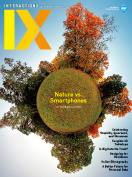Authors:
Pernille Bjørn
Modernity at Large: Cultural Dimensions of Globalization By Arjun Appadurai (1996)
The Future as Cultural Fact: Essays on the Global Condition By Arjun Appadurai (2013)

Appadurai's work on understanding culture in a global society is a huge inspiration to my work on global software development (NexGSD.org). I am especially intrigued by his insights on the Indian society and his conceptual approach to culture in the form of –scapes (ethnoscapes, mediascapes, technoscapes, finanscapes, and ideoscape). Both books have provided significant motivation in my attempt to figure out how to talk about culture as a feature of collaborative practice, rather than nations and geographies. Also, his work helped me to develop the concept of documentscapes as an important collaborative structure in global software development. While I particularly have been reading his book from 1996, I am currently reading the sequel from 2013.
Ethnography through Thick and Thin By George Marcus (1998)

While multi-sited ethnography is not about studying multiple locations per se, it is a great way to think about ethnography dedicated to studying collaborative practices outside the laboratory, the control room, or the emergency room. Marcus's agenda entails that an important part of multi-sited ethnography is the work of defining the multi-sited field site as an object of study by following associations and connections, which are not geographically bounded. Multi-sited ethnography is an excellent way to think about the important invisible work involved when conducting ethnography of collaborative practices. In particular, I have found it useful to consider ethnographic intervention as part of CSCW research.
Multi-sited ethnography is an excellent way to think about the important invisible work involved when conducting ethnography of collaborative practices.
Human-Machine Reconfigurations: Plans and Situated Actions By Lucy Suchman (2007)

Where are the boundaries between the social and the material? Suchman's work has always been foundational to the way I think about collaboration and collaborative technologies, especially in the work I have done in healthcare. The 2nd edition from 2007 includes additional chapters where Suchman elegantly introduces sociomaterial practices as a way to think about reconfigurations of human actions and technologies as constitutively connected. I find this very useful in my work of figuring out how to connect social scientists' interest in complexity, computer scientists' interest in design, and my own interest in the interdisciplinary research agenda of sociomaterial design.
Pernille Bjørn is an associate professor in the Technologies in Practice research group at the IT University of Copenhagen, Denmark (sabbatical) and visiting faculty at the Department of Informatics, University of California, Irvine and the Intel Science & Technology Center for Social Computing (ISTC) (2013/2014).
Copyright Held by Author
The Digital Library is published by the Association for Computing Machinery. Copyright © 2014 ACM, Inc.








Post Comment
No Comments Found